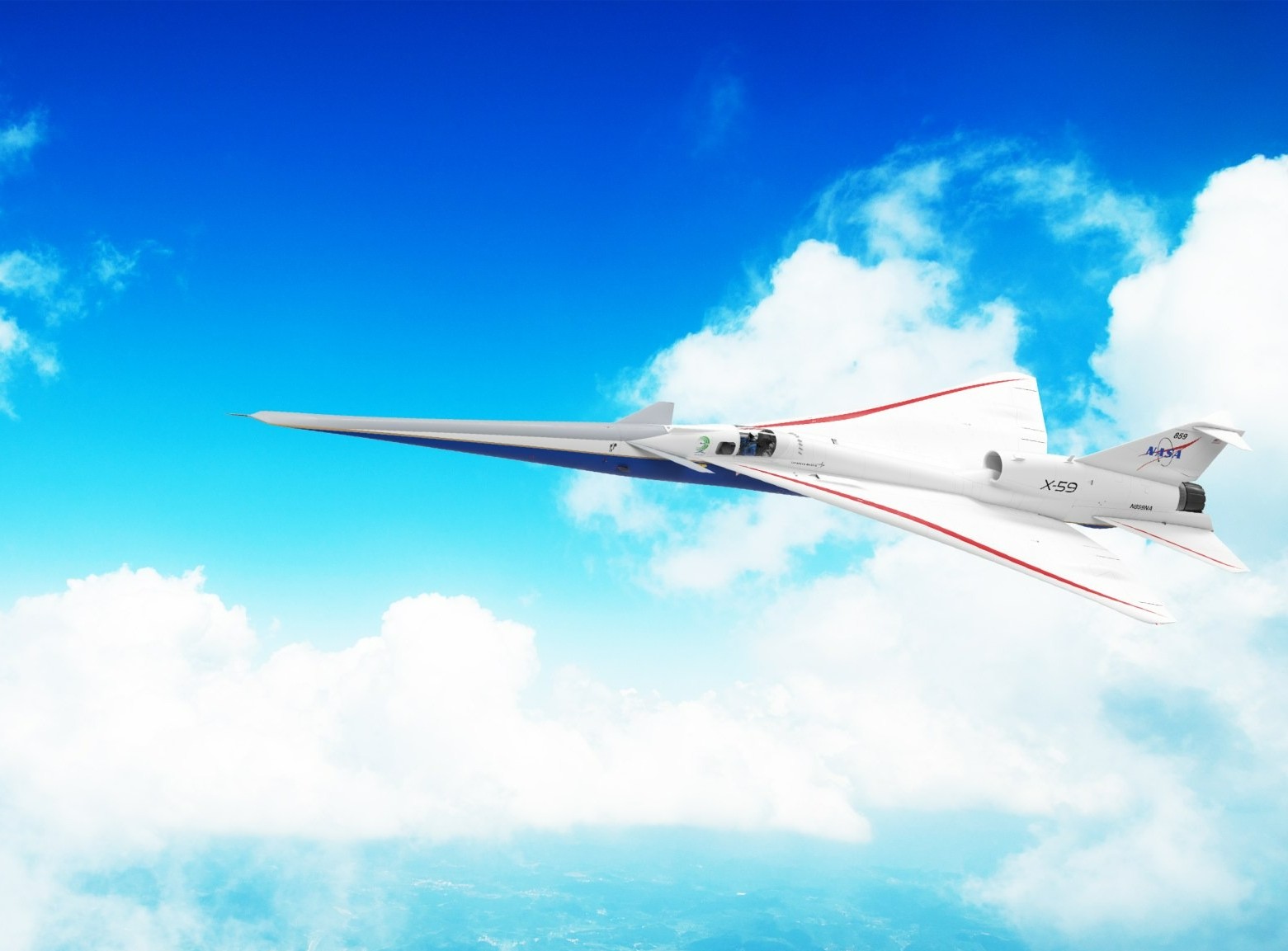Cross-country flights shouldn’t take six hours when the technology exists to do it in three. The problem isn’t speed—we’ve had supersonic jets since the 1970s. The problem is noise. Sonic booms from aircraft like the Concorde created thunderous 105-decibel explosions that shattered windows and triggered lawsuits, forcing regulators to ban overland supersonic flight.
NASA’s X-59 QueSST aims to solve this with a radical design that produces a gentle 75-decibel “sonic thump”—about as loud as closing a car door.
Engineering the Quiet
An 11-meter nose and no forward windows create the strangest supersonic jet ever built.
The X-59 looks like someone stretched a fighter jet through Photoshop. That comically long nose isn’t aesthetic—it’s acoustic engineering. NASA engineers designed the 30-foot fuselage extension to spread shock waves gradually instead of concentrating them into ear-splitting booms.
Because this 11-meter nose blocks forward vision completely, pilots navigate using NASA’s External Vision System, essentially flying by camera feed like they’re playing Microsoft Flight Simulator at 925 mph. The modified GE F414 engine (borrowed from F/A-18 Hornets) pushes the aircraft to Mach 1.4 while maintaining the delicate aerodynamics needed for quiet operation.
Reality Check on Timelines
This groundbreaking aircraft still hasn’t left the ground.
Here’s where expectations meet engineering reality. Despite its January 2024 rollout, the X-59 remains earthbound, completing engine tests and systems validation. First flight is scheduled for late 2025—if everything goes perfectly.
After that comes years of acoustic testing over communities near Edwards Air Force Base. Researchers will measure actual human perception of the sonic thump versus traditional booms.
The Regulatory Gambit
Changing aviation law requires more than just quieter jets.
NASA plans to submit community response data to the FAA and international regulators by 2027. This could potentially shift noise standards from rigid decibel limits to perception-based measurements. Success could unlock overland supersonic routes for the first time since Concorde’s retirement.
The regulatory pathway matters as much as the engineering breakthrough.
The Long Game
Impressive engineering meets uncertain commercial prospects.
This aircraft represents genuinely breakthrough acoustics engineering, solving a problem that stumped aerospace designers for decades. But experimental aircraft and commercial viability live in different universes. Even with regulatory approval, supersonic travel faces hurdles from fuel efficiency to ticket pricing that no amount of quiet engineering can solve.





























